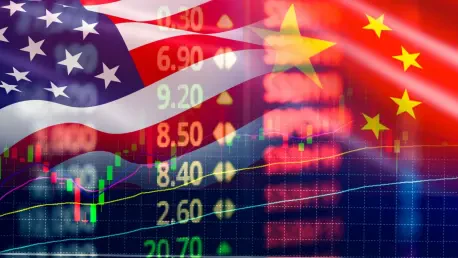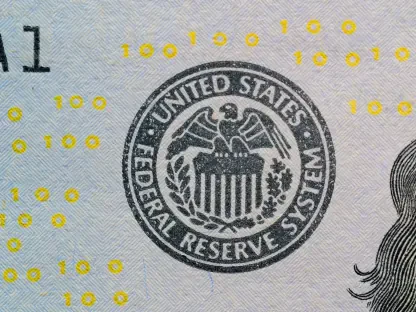The global economy finds itself at a pivotal junction as the world advances amid the ongoing US-China trade tensions that have characterized recent years. Experts have projected an expansion rate of 2.9% for both this year and the next. Despite the optimistic forecast, these figures have slightly dipped from earlier estimates of 2.75%. The elevated tariffs between these economic giants remain a significant focal point and continue to cast a shadow over international trade relations. Even as signs of détente have emerged, tariffs persist, introducing considerable uncertainty that may influence business strategies around the world. These circumstances have led to questions about how global economic growth can be sustained amid such complexities.
The Impact on Global Trade Relations
Tariffs and Their Consequences
Ongoing tariffs between the US and China have sent ripples across the globe, affecting trade relations between other countries as well. This tense situation presents obstacles for businesses that are grappling with the unpredictability of international trade policies. Besides the US-China tariff scenario, various factors are contributing to global trade uncertainty. One is the existing 10% tariff on US-UK trade, which impacts market dynamics despite being less severe than possible tariffs on other nations. Emerging Asian economies, in particular, face heightened risks from potential trade policies that could harm their growth trajectories. The delicate balance of easing tariffs versus maintaining leverage remains central to these countries’ strategies in navigating this complex landscape.
Market Responses and Economic Implications
In the wake of easing US-China tariffs, financial markets have experienced a positive shift. This policy adjustment has slightly relaxed direct trade impacts and provided a glimmer of hope for business and consumer confidence. However, US trade policy’s uncertain future continues to harbor hesitations, preventing full recovery in sentiment across global markets. Businesses are finding it tricky to strategize investments and expansion plans due to unpredictable tariffs. Moreover, consumer confidence levels remain cautious, tethered by the same unpredictability of trade relations. These variables underscore the fragile nature of this economic interplay, where policy changes can pivot market responses swiftly and significantly.
Strategic Economic Adjustments and Projections
US Fiscal Policies and Economic Stimuli
Whether stimulatory fiscal policy in the US next year will offer some relief amid trade conflict remains speculative. The US government explores targeted fiscal interventions to counteract trade-induced economic pressures. These initiatives might boost domestic demand and mitigate some of the adverse effects stemming from trade disagreements. Nonetheless, the extent of these policies’ efficacy depends on timely implementation and coordination with other economic measures. Despite these potential interventions, the forecast for sustained growth urges caution, given prevailing global pressures and regional responses to evolving trade activities.
China’s Economic Stability and Policy Changes
Meanwhile, China’s economic outlook indicates reduced reliance on fiscal interventions due to scaled-down tariffs. As China recalibrates its strategy, focusing on maintaining steady growth becomes pivotal amid shifting global trade dynamics. This economic resilience might empower China to focus on internal reforms and strategic partnerships to strengthen its position in international trade. Additionally, a decrease in energy prices, influenced partly by OPEC’s production adjustments and weaker global demand, introduces a marginally positive supply shock. These factors feed into China’s broader strategy to maneuver through policy challenges robustly.
Beyond Trade Tensions: Broader Economic Influences
Confidence in Economic Predictions
In navigating these volatile trade tensions, economic forecasts are marred by wide confidence bands, reflecting the unpredictable nature of policy shifts. Economists urge careful optimism, emphasizing that current projections might evolve rapidly with policy changes. This climate requires businesses and investors to remain agile and adaptable in their planning. The emphasis lies on evaluating risk management strategies and considering diversified investments to maintain stability across potential economic fluctuations. While assurances are not steadfast, keen awareness and strategic shifts might offer ballast against turbulence in global trade politics.
Considerations and Future Prospects
The global economy stands at a crucial crossroads as it navigates the complexities presented by ongoing US-China trade tensions, a defining feature of recent years. Economic analysts predict a growth rate of 2.9% for this year and the next, though this figure has slightly dipped from earlier predictions of 2.75%. The persistent elevated tariffs between the US and China remain central to these tensions, overshadowing international trade relations with uncertainty. While there are initial signs of easing, the tariffs still loom large, injecting significant unpredictability into the global economic atmosphere. Such unpredictability forces businesses worldwide to reevaluate their strategies and adapt to potential changes brought on by these tensions. The primary challenge faced by the global economy is sustaining economic growth amidst these complex international dynamics, emphasizing the necessity for strategic global economic governance and cooperation to foster stability and resilience in increasingly volatile environments.









